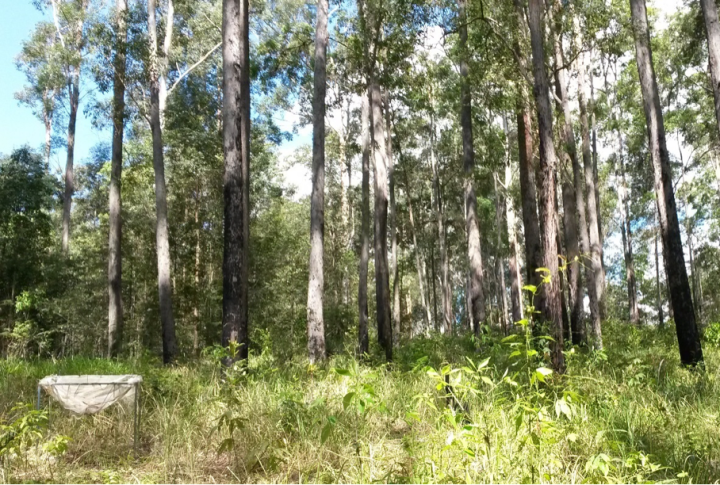By Orpheus Butler
Fire is a recurring phenomenon in many Australian ecosystems, and the importance of understanding the ecological impacts of burning will increase with the changing climate.

Our new research has found that fire leaves a clear biogeochemical signature on the soil—plant system. It creates soils with high phosphorus (P) and low carbon (C) and nitrogen (N). Knowing how fire changes soil nutrients is important for the management and conservation of forest ecosystems, because nutrients will affect the types of ecosystems that grow in a place.
Recently it is becoming clear that fire can decouple the ecological cycles of C, N and P. In particular, the low temperatures at which soil C and N turn into gas (and are thus lost to the atmosphere) shift the balance of soil C, N and P towards P (i.e. lower C:P and N:P ratios). These shifts appear to be particularly strong in the rapidly cycled pools of C, N and P in the soil. This effect is more dramatic when fires occur more often.

Interestingly, soil scientists generally think that young soils have more P relative to N, so that plants growing in young soils are limited by N availability. However, this balance gradually shifts over millennia due to losses of soil P through weathering and water run-off, and certain plants capturing N from the air and then adding it to the soil. Thus, plants growing in old soils are often limited by P availability.
The Australian continent has some of the oldest, most P-depleted soils in the world, as well as a large extent of highly fire-prone forest ecosystems. It seems plausible that the fire-loving nature of these forests is driven (at least in part) by the low levels of soil P, as the P-rich signature of fire could serve to ease P limitation and thus enhance plant growth and P cycling.
Given that P is an essential nutrient for all life, these effects are likely to have broad implications that reinforce the idea that fire is an important component of many forest ecosystems in Australia.
Our work shows that the signature of fire on soil nutrients extends into many parts of the ecosystem, and can also be seen in biomass and nutrient requirements of plants and soil microbes. These effects have been, or can be, linked to altered rates of growth and reproduction, N and P mineralisation, litter decomposition, plant and microbial community composition, and various other ecosystem properties.
Overall, our research indicates that it is crucial to consider fire regimes when looking at C and nutrient budgets. Further, it shows that focusing on fire-altered nutrient cycling could allow us to better predict how forests and even individual species will respond to fire, which will prove useful for deciding on optimal prescribed burning regimes
Reblogged this on Griffith Environmental Biogeochemistry Research Lab and commented:
The biogeochemical signature of forest fire!
LikeLike